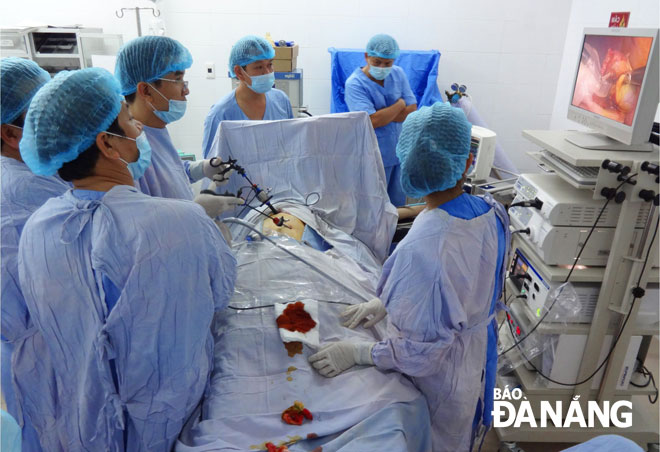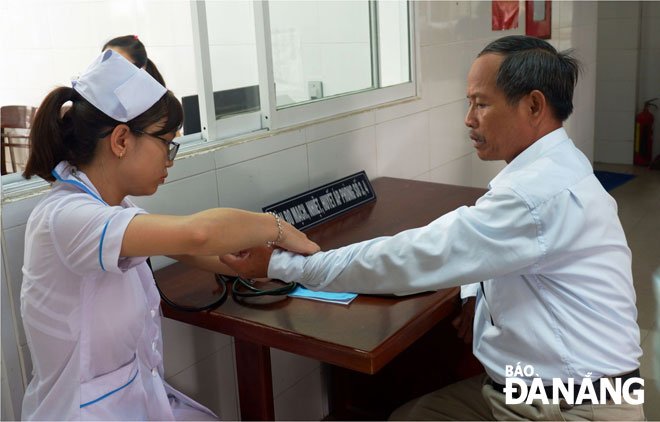"Satellite hospital" project helps to ease patient overload
The Da Nang Department of Health is completing its plans for the implementation of a project to convert the 3 district-level medical centres in Hai Chau, Cam Le, and Hoa Vang into the so-called “satellite hospitals” for the Da Nang General Hospital over the 2019 – 2021 period.
 |
| Endoscopic gallbladder surgery underway at the Cam Le Medical Centre |
The project aims to reduce the current patient overload at the hospital, and enhance the quality of healthcare services at these medical centres as well.
Doctor Nguyen Ut, the Deputy Director of the municipal Department of Health, affirmed, the building of “satellite hospitals” is a necessary trend in the current context of increasing severe patient overload at core hospitals.
In Da Nang, since 2017, the Da Nang Cancer Hospital is the first medical establishment in the city to become a “satellite hospital” which receives technology transfer and medical training from the Ho Chi Minh City Cancer Hospital.
Over the past 2 years, dozens of medical techniques have been deployed successfully at the Da Nang Cancer Hospital, and more than 400 medical workers have access training courses.
The most important thing is that the technology transfer has reduced the patient overload for the “core hospital”, and enabled patients from Da Nang and elsewhere in the central region access modern cancer treatment at the Da Nang hospital, instead of having to travel further afield, hereby saving them travel expenses, time, and treatment costs.
Following the great success of the “satellite hospital” model at the Da Nang Cancer Hospital, the conversion of the Hai Chau, Cam Le, and Hoa Vang medical centres into the so-called “satellite hospitals” for the Da Nang General Hospital will be conducted.
The highly practical project centers on personnel training, technology transfer, medical equipment procurement, and online medical consultation.
In detail, the “nuclear hospital”will conduct the transfer of its medical technique, and send its medical staff to the “satellite facilities” for professional support, supervise the implementation of the transferred specialist packages, and set up a consultancy team for the satellite units.
Meanwhile, the 3 medical centres are responsible for upgrading their facilities, proposing their equipment procurement, and receiving and offering treatment to patients who are in recovery period from the “core hospital” in accordance with the technical packages that have been transferred.
 |
| A man registering for medical examination and treatment at the Cam Le Medical Centre |
Doctors from “core and satellite hospitals” will provide consultations though telemedicine, meaning patients with complicated conditions were handled right at the district level, thus reducing accident and fatality rates.
On-site training and technique transference will strengthen along with after-training supervision in effort to transfer modern surgery techniques.
Under the project, such advanced techniques as anesthesia, emergency resuscitation, hemodialysis and endoscopic appendectomy will be performed at the 2 medical establishments. Thanks to the project, more citizens can enjoy medical advances right at their local hospitals. This, in turn, help to increase patient visits and treatment rates at these “satellite hospitals”.
According to doctor Le Duc Nhan, the Director of the Da Nang General Hospital, apart from easing the patient overload, the project helps doctors of the core hospital have more time to do scientific research and develop new modern techniques.